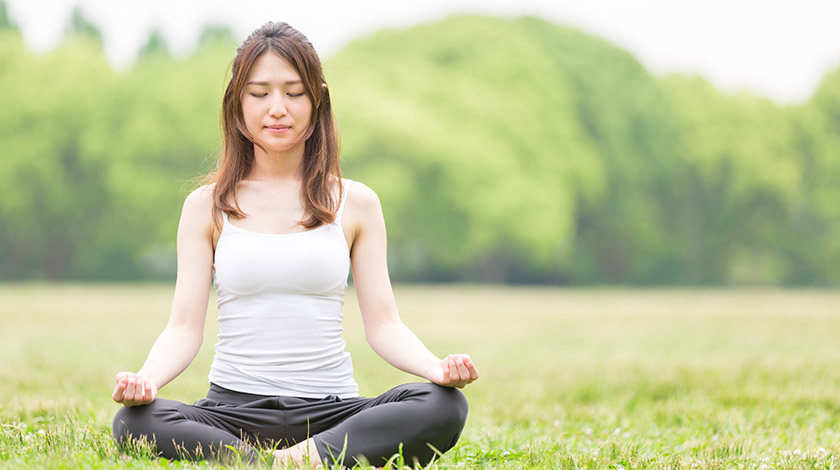We all get a little highly strung now and then. Whether it’s the pressures of work, family commitments taking their toll or even just an annoying traffic jam, stress can easily creep up on us when we least expect it. How do we keep stress from mounting up to unhealthy levels and affecting our health? Here are some of our favourite relaxation techniques to help you chill out!
Deep breathing

Deep breathing is undoubtedly the cheapest and simplest relaxation technique out there. Scientific evidence indicates that deep breathing can help to slow down your heart rate, improve oxygen circulation in the blood and decrease anxiety.1
Deep breathing isn’t as simple as opening your mouth wide and gasping for air — that’s more likely to exacerbate than reduce your anxiety!
- Begin by taking a deep breath which originates in your diaphragm, which is between your stomach and your rib cage.
- As you breathe, breathe in through your nostrils and out through your mouth.
- Maintain a steady rhythm. Each breath from inhalation to complete exhalation should take between 4 to 6 seconds.
As you practise deep breathing, remember to focus on your breathing. This takes your mind away from your stress and helps you unwind!
Meditation

Meditation has been linked to reduced levels of stress and anxiety for both healthy people, and those suffering from chronic conditions.2 The goal is to clear your mind by freeing yourself from distractions and anxieties, and find calmness and peacefulness deep within yourself. This is how you do it.
- Find a quiet place where you won’t be disturbed.
- Sit cross-legged or in the lotus position and get comfortable. A meditation session should last at least 15 minutes and involve minimal movement, so make sure you can hold your meditation pose for a reasonable period of time!
- Focus on a word or sound. If you’re stuck, try making the humming sound “Om”.
- As you focus, allow your stress to melt away, emptying your mind completely from the distractions of the world.
Research indicates that meditation may reduce everyday stress and anxiety in healthy people and those with long-term conditions.2
Visualization
Visualization is an excellent relaxation technique if your source of anxiety is a future event, such as a competition, presentation or important meeting. Take a presentation as an example. Visualization involves a “mental rehearsal” of the presentation. Imagine yourself delivering your script and showcasing your presentation slides confidently and eloquently. Visualize the applause that will follow on your successful conclusion. This gives you a major confidence boost and ensures you will be more relaxed when the big day comes, because in your mind you’ll already have done it once before!
Ultimately, managing stress is about finding a balance in your life. Make time to indulge in your hobbies, whether it’s a morning jog or even 15 minutes of reading before bed. This keeps you from burning out, and gives you that little something to look forward to each day!
Sources
- Coping with anxiety and panic attacks. Nottingham Trent University. Visited 8 March 2016.
- Mindfulness-based stress reduction: a literature review and clinician's guide. Praissman S. J Am Acad Nurse Pract. 2008; 20(4): 212-6.

